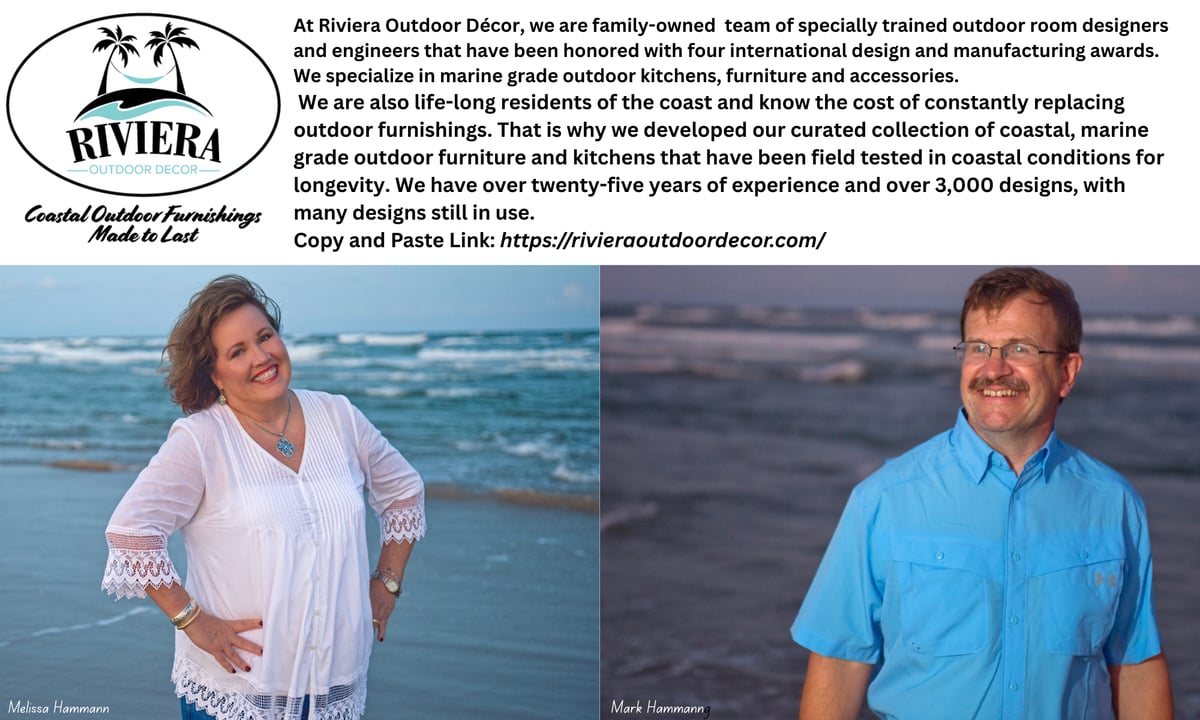Your Cart is Empty
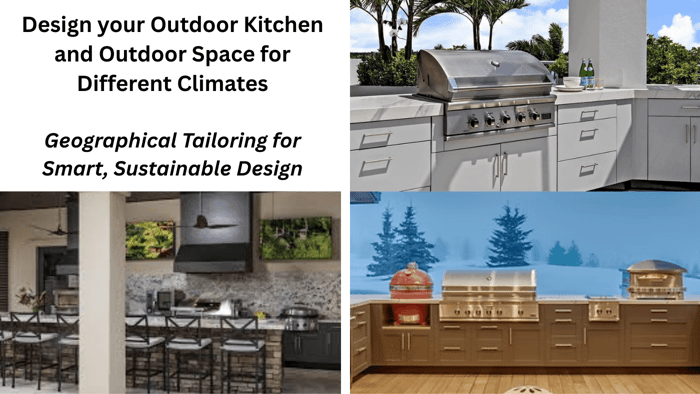
If you want to save money on your Outdoor Space and have it last, you will need to Design your Outdoor Kitchen and Space for Different Climates, according to where you are located.
In designing outdoor kitchens or outdoor spaces, there is never a "one-size-fits-all-approach" due to how dramatically environments differ. Different areas have vastly different weather, and outdoor kitchen cabinets, appliances and patio furniture must endure local conditions.
As the author of this article, I have served on numerous boards- industry wide and have found most people see outdoor rooms and kitchens as a 'one size fits all' without addressing the need to design your outdoor kitchen and space for different climates. Obviously, there are differences in designing an outdoor room and kitchen for Northern Michigan, then in Florida or Arizona. Outdoor furniture and Kitchens must be geographically tailored for that area.
When I walk into a 'big box store" and see isle after isle of patio/outdoor furniture, I think of how much money will be wasted due to poor quality but also the wrong piece of outdoor furniture (and now outdoor kitchens) that will need to be replaced due to an outdoor product that is not geographically tailored.
Smart design is geographic tailoring when you Design your Outdoor Kitchen and Space for Different Climates. it’s better for durability, customer satisfaction and sustainability.
Examples of these areas include: Florida, Gulf Coast, California Coast, Eastern, Western Seaboard and the Caribbean. These are your coastal, wet, humid, climates. Other climate conditions that need to be considered due to being close by the ocean, sand and strong wind gust also occur.
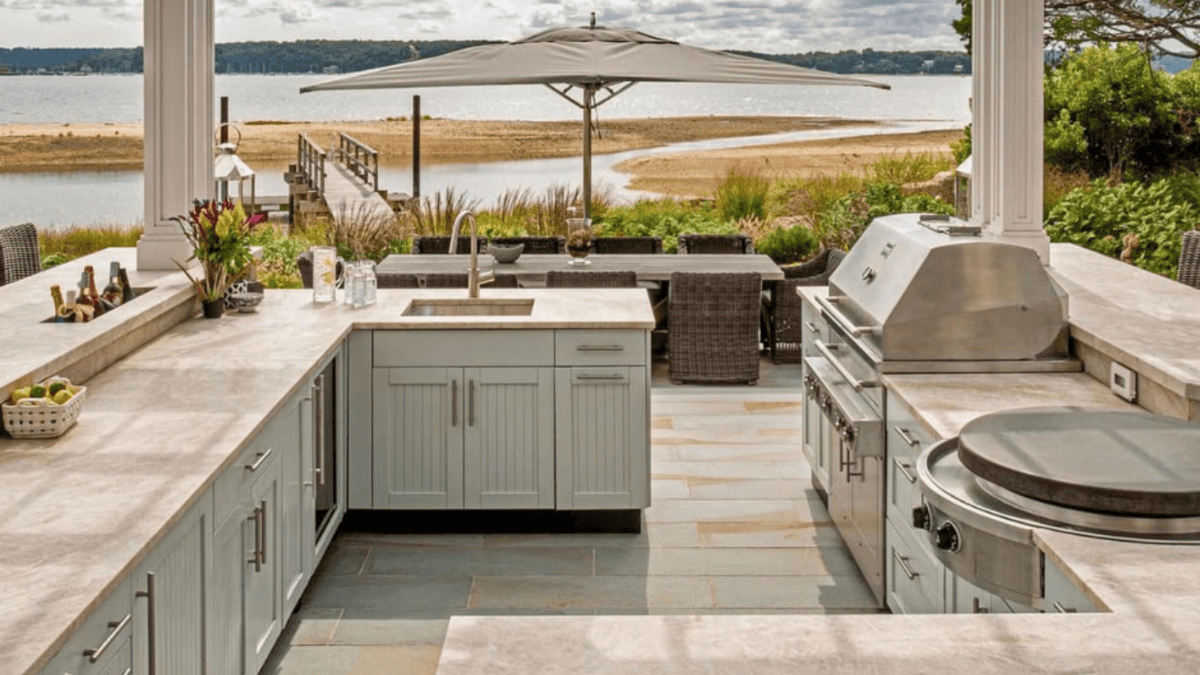 Design your Outdoor Kitchen and Space for Different Climates. There is never a 'one size fits all' The materials needed to withstand corrosive coastal conditions is quite different for a cold/snowy region.
Design your Outdoor Kitchen and Space for Different Climates. There is never a 'one size fits all' The materials needed to withstand corrosive coastal conditions is quite different for a cold/snowy region.Materials that are rust-resistant. Some examples are:
Eucalyptus or Ipe wood – Dense, rot-resistant tropical hardwoods.
Synthetic rattan or resin wicker – Doesn’t absorb moisture.
Open-weave or slatted designs for airflow and quick drying.
Neutral and nautical color palettes (white, navy, driftwood tones). A dark metal can make an outdoor piece of furniture very hot to the touch when left out in the sun.
Outdoor Cushions and Pillows made with Solution Dyed Outdoor Fabric such as Sunbrella.
Fast-drying foam – Used in outdoor cushions and pillows to prevent mold and mildew buildup.
Outdoor Cushions for Coastal area should be made with special marine grade construction and notions in order for the outdoor cushion to last. An example would be, Marine Grade Outdoor Cushions from Riviera Outdoor Décor
Avoid using any kind of stone work that has 'filler' added to it. It is quite possible the filler will yellow in the sun
All outdoor furniture covers/outdoor kitchen covers should have adequate vents to prevent condensation and consequential rust.
Marine Grade Outdoor Fans are a 'must have' in a coastal outdoor room and kitchen in order to keep cool. An outdoor ceiling fan for a coastal area must be strong enough to move maximum air and yet resist corrosion from the salt air. Available here
Outdoor Kitchen Appliances- Select Marine Grade Outdoor kitchen such as Marine Grade Outdoor Refrigerators that can handle the range of temperatures even into triple digits and still keep your food safe.
Examples: Arizona, Nevada, West Texas and New Mexico- Desert Southwest
Desert Climates can be brutal. It is a climate that is hot which makes it quite dry with the intense sun, and occasional monsoon storms. Desert climates require heat-resistant and UV-resistant materials that won’t fade, crack, or warp under intense sun
A well-designed space should account for shade from extreme heat, mist systems, protection from the sun with consequential fade out, functionality, durability in material under extreme heat, comfort, and aesthetics
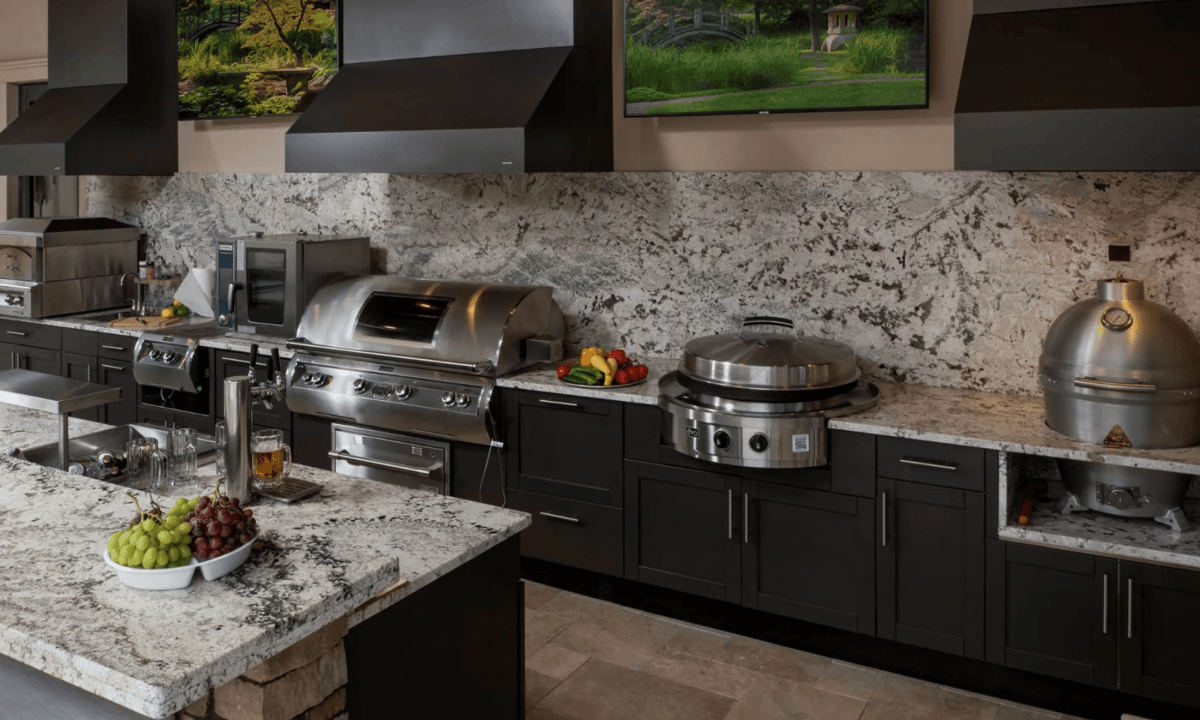 When you Design your Outdoor Kitchen and Space for Different Climates, a hot dry climate can be made comfortable with a few adaptations for the climate. Most importantly-shade, as shown above
When you Design your Outdoor Kitchen and Space for Different Climates, a hot dry climate can be made comfortable with a few adaptations for the climate. Most importantly-shade, as shown aboveDesert Climates require heat-resistant and UV-resistant materials that won’t fade, crack, or warp under intense sun.
Shade structures- This includes: Pergola, ramada, or patio cover, retractable awnings or sail shade (with UV-resistant materials)
Built-in fans or misters for cooling under the shade. Marine Grade outdoor fans that seriously move the air and cool.
Evaporative coolers in semi-enclosed spaces
Refrigeration: Choose outdoor-rated fridges and coolers that are marine grade and food safe. They must handle triple-digit temps.
Selections: Choose light colors to avoid heat absorption
Outdoor furniture: Synthetic wicker or Resin are your best options for a desert climate
Examples: Northern areas for the USA
Need freeze-resistant construction, with materials that won't crack or degrade (e.g., resin wicker, treated wood).
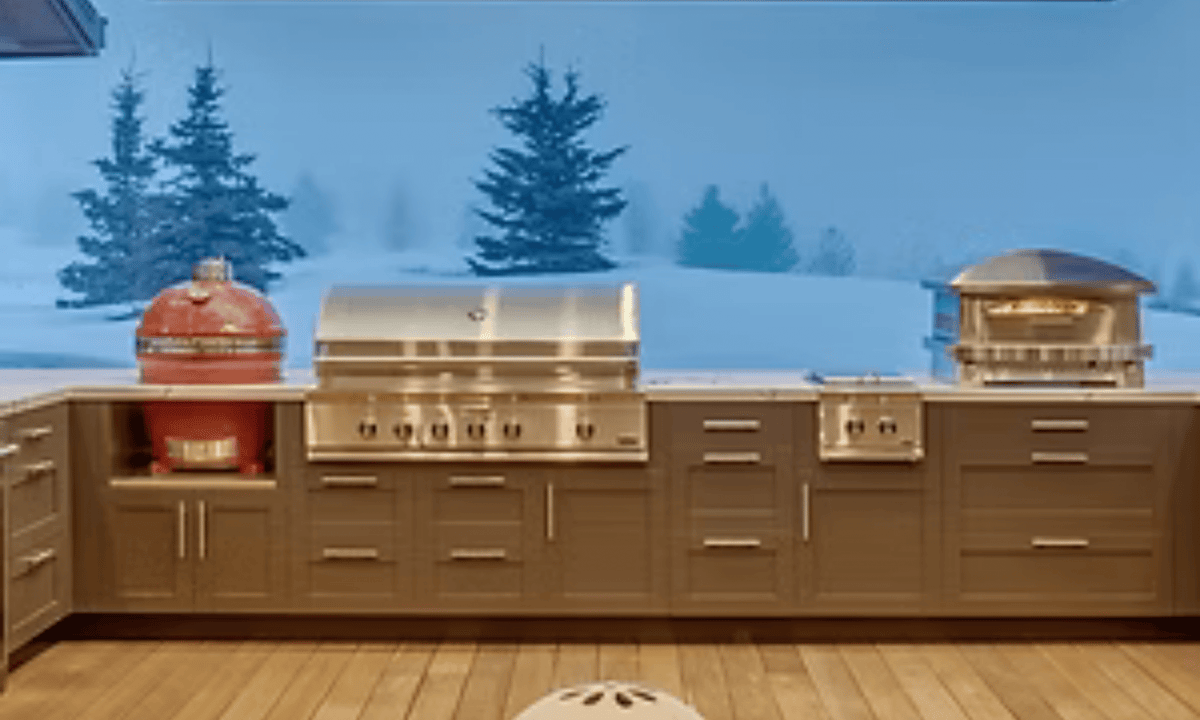 Cold/Snowy Conditions what to look for- Design your Outdoor Kitchen and Space for Different Climates
Cold/Snowy Conditions what to look for- Design your Outdoor Kitchen and Space for Different ClimatesOutdoor Kitchen Countertops: Use granite or high-quality concrete. Avoid tile or low-grade stone that may crack.
Outdoor Kitchen Cabinets: Choose stainless steel for (preferably 304-grade or higher), powder-coated metal..
Flooring/Surfaces: Non-slip, textured pavers, concrete, or natural stone with high frost resistance.
Avoid: Wood that isn’t treated for outdoor exposure, or porous materials like travertine.
Outdoor furniture- Select modular or foldable furniture for easy winter storage. Use powder-coated cast aluminum, resin wicker, or treated teak for furniture.
Fabrics and finishes- Darker colors that absorb heat from limited sun.
Infrared heaters, mounted on walls or ceilings, for instant warmth.
Fireplace or fire pit (gas or wood) as a central gathering feature.
Heated flooring (electric or hydronic) if you have a covered patio with pavers or stone.
Plumbing Considerations- Install frost-proof outdoor faucets and drainable plumbing to prevent burst pipes. Ensure all water lines can be shut off and winterized easily. If possible, place plumbing closer to interior walls to benefit from indoor heating.
Include task lighting for cooking and ambient lighting for seating areas.
Install lights on timers or with motion sensors for safety during early darkness in winter.
Outdoor Room and Kitchen Design is a growing field. It is also quite different than your Interior Design Field. Look for an Outdoor Room and Kitchen Designer with current CEUs and specialized training to ensure the correct selections have been made for your outdoor space, kitchen cabinets and outdoor kitchen appliances for the climate it will be in. Otherwise, you are wasting money with an outdoor space and kitchen that will not last.
If you are looking for an outdoor room and kitchen designer with all current CEUs and specialized training, look no further than Riviera Outdoor Décor
